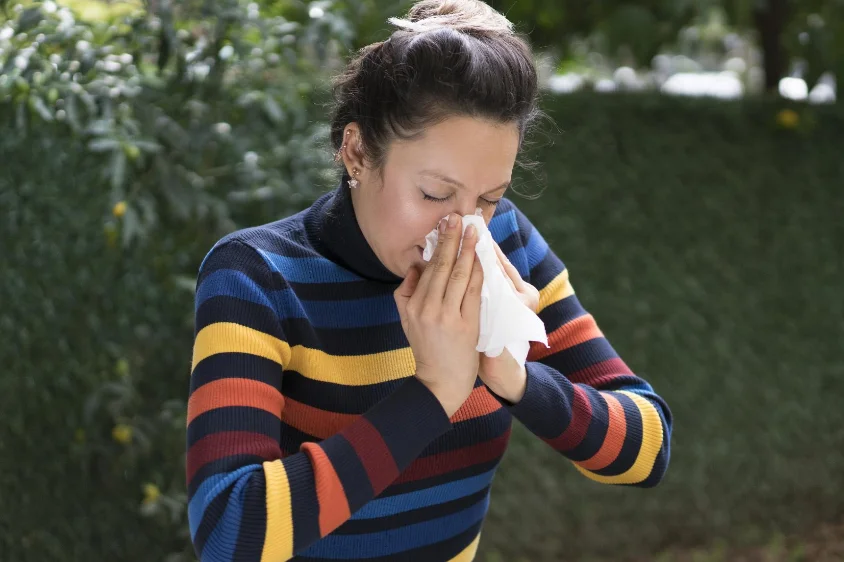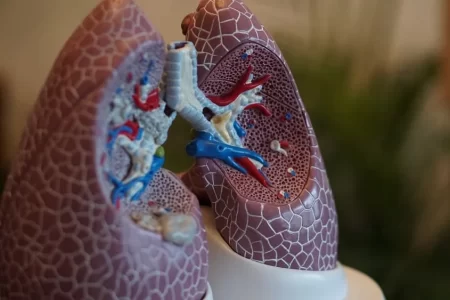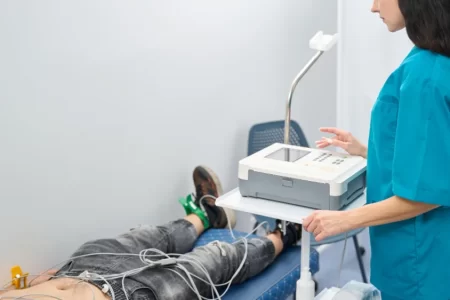ICD-10 Code for Allergic Rhinitis: Understanding J30.1
- Updated on: Feb 29, 2024
- 4 min Read
- Published on Sep 5, 2023

What is the ICD-10 Code for Allergic Rhinitis?
A method used to identify and label a variety of medical ailments, diseases, and disorders is known as the International Classification of Diseases, 10th Edition (ICD-10). It is simpler for healthcare professionals, insurers, and researchers to communicate and precisely record patient information when each disease is given a unique alphanumeric number.
The J30-J39 block, which includes a number of respiratory disorders, is where the ICD-10 code for allergic rhinitis is located. Based on variables including the kind, severity, and any associated consequences, the code for allergic rhinitis is further defined. This approach makes sure that medical personnel can accurately recognize and categorize various kinds of allergic rhinitis.
Understanding the Variations
Allergic rhinitis, commonly known as hay fever, is not a one-size-fits-all condition. It varies in severity, duration, and causative agents. The ICD-10 code system takes these variations into account to provide a comprehensive understanding of the condition. Here are some key variations and their corresponding codes:
Intermittent Allergic Rhinitis (J30.1)
Intermittent allergic rhinitis is characterized by symptoms that occur for less than four days a week or less than four weeks in total. It often arises due to specific allergens and can be triggered seasonally.
Persistent Allergic Rhinitis (J30.2)
Persistent allergic rhinitis, on the other hand, involves symptoms that occur for more than four days a week and persist for more than four weeks. This form of rhinitis can be perennial, meaning it occurs year-round, and is often associated with indoor allergens like dust mites and pet dander.
Seasonal Allergic Rhinitis (J30.3)
Seasonal allergic rhinitis is typically triggered by allergens that are prevalent during specific seasons, such as pollen during spring or fall. Its symptoms are recurrent but occur only during certain times of the year.
Other Allergic Rhinitis (J30.8)
In cases where the specific type of allergic rhinitis does not fit into the above categories, the code J30.8 is used. This category is reserved for less common variations and situations.
Importance of Accurate Coding
Accurate coding of allergic rhinitis is vital for several reasons:
- Treatment Planning: Healthcare providers rely on precise coding to determine the most effective treatment strategies for allergic rhinitis. Knowing the type and severity of the condition guides them in prescribing appropriate medications and interventions.
- Insurance Claims: Accurate coding ensures that insurance claims are processed smoothly. Incorrect codes can lead to claim denials or delays in reimbursement, causing unnecessary hassles for patients and healthcare providers.
- Research and Epidemiology: Medical researchers use coded data to conduct studies on allergic rhinitis prevalence, trends, and treatment outcomes. Accurate coding is essential for generating reliable epidemiological data.
- Public Health Planning: Government health agencies rely on coded data to plan public health interventions and allocate resources efficiently. Accurate coding helps identify regions with a higher prevalence of allergic rhinitis and target preventive measures accordingly.
Coding Challenges and Solutions
Despite the fact that the ICD-10 system offers a thorough foundation for classifying allergic rhinitis, difficulties might still occur given the rapidly changing state of medical knowledge and improvements in therapy. Regular updates and training for healthcare personnel are essential to addressing these difficulties.
In order to code accurately and effectively, healthcare organizations might also invest in cutting-edge software and technologies. These resources can aid medical practitioners in navigating the ICD-10 system’s intricacies and ensuring accurate recording.
Preventing Allergic Rhinitis
While accurate coding is crucial for managing allergic rhinitis, it’s equally important to take proactive steps to prevent this troublesome condition. Patients can play an active role in reducing their risk of developing allergic rhinitis by following these essential strategies:
Minimizing Exposure to Allergens
One of the fundamental ways to prevent allergic rhinitis is to minimize exposure to allergens, those pesky substances that trigger your symptoms. Here’s how:
- Pollen Avoidance: Keep an eye on pollen forecasts in your area, and when pollen counts are high, try to stay indoors, particularly during peak pollen hours.
- Dust Mite Control: Dust mites thrive in bedding, mattresses, and upholstered furniture. Consider using dust mite covers for your pillows and mattresses, washing bedding in hot water, and vacuuming your home frequently with a vacuum cleaner equipped with a HEPA filter.
- Pet Allergies: If you’re allergic to pet dander, consider options like hypoallergenic breeds or keeping pets out of bedrooms. Regularly grooming and bathing your pets can also help reduce allergen exposure.
- Mold Management: Mold can be a significant trigger for allergic rhinitis. Prevent mold growth by fixing any leaks promptly, ensuring good ventilation in bathrooms and kitchens, and using a dehumidifier if necessary.
Keeping Indoor Environments Clean
Maintaining a clean indoor environment is essential in reducing allergen buildup. Here’s what you can do:
- Regular Cleaning: Dust and vacuum your home regularly. Use a vacuum cleaner with a HEPA filter to trap airborne allergens effectively.
- Allergen-Proof Covers: Invest in allergen-proof covers for pillows, mattresses, and duvets to create a barrier between you and dust mites.
- Curtains and Upholstery: Wash curtains and upholstery periodically, as they can harbor dust and allergens. Consider using washable curtains and blinds.
- Air Filtration: Consider using high-efficiency particulate air (HEPA) filters in your HVAC system to ensure that the air in your home is clean and free from allergens.
Using Air Purifiers
A useful addition to your arsenal for preventing allergies is an air purifier. These gadgets are intended to filter allergies and other airborne contaminants, resulting in a healthier home environment. Choose a HEPA filter-equipped air purifier since it is good at capturing tiny allergy particles.
Seeking Medical Advice for Severe Symptoms
Seeking medical help is essential if you have severe allergic rhinitis symptoms that severely affect your everyday life. To help you properly manage your illness, a healthcare expert can offer personalized advice, suggest suitable drugs, and talk about other treatment options, such as allergen immunotherapy (allergy injections).
Conclusion
Precision and accuracy are the pillars of successful treatment and communication in the healthcare industry. These goals are greatly helped by the ICD-10 code for allergic rhinitis. Healthcare personnel are better able to give treatment when they are aware of the subtleties and variances of this code, which also makes insurance claims processing easier, promotes medical research, and helps broader public health efforts.












